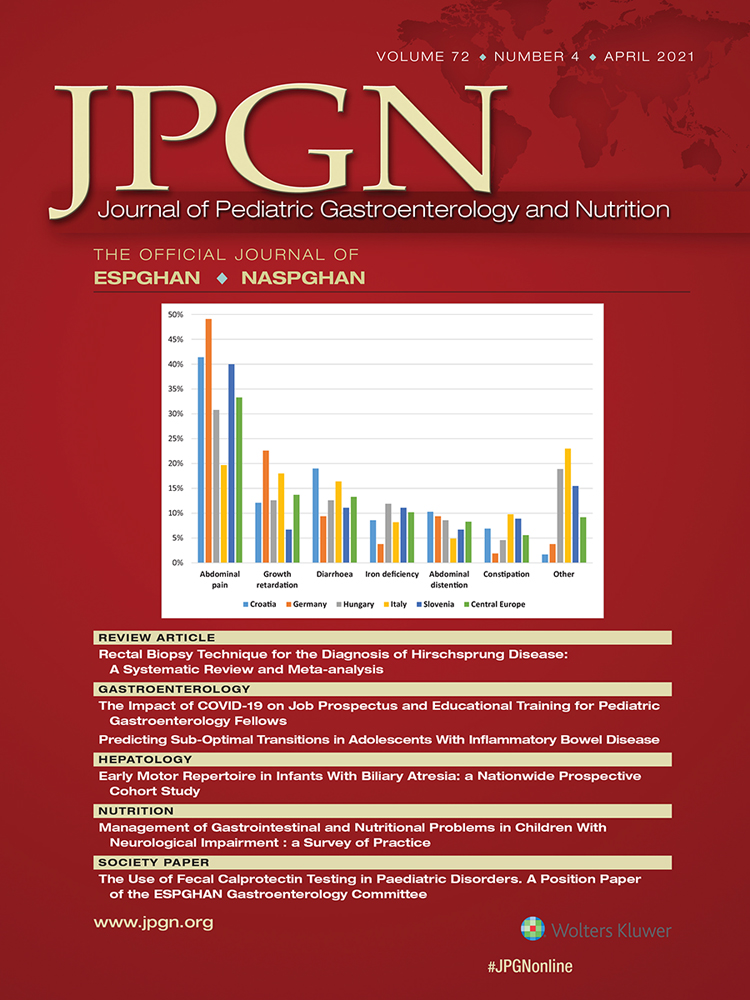Rectal Biopsy Technique for the Diagnosis of Hirschsprung Disease in Children
A Systematic Review and Meta-Analysis
The authors report no conflicts of interest.
The authors declare no commercial or financial interests regarding this article. Regina El Dib received a Brazilian Research Council (CNPq) scholarship (CNPq 310953/2015-4).
Giovana Tuccille Comes, Regina El Dib, and Pedro Luiz Toledo de Arruda Lourenção were responsible for the study conception and design, including conducting the literature search, data collection, data analysis, and writing of the paper.
Erika Veruska Paiva Ortolan was responsible for analysis and interpretation of data, writing of the paper.
Maressa Maria de Medeiros Moreira was responsible for data collection.
Wilson Elias de Oliveira Junior and Marcos Curcio Angelini were responsible for conducting the literature search and data collection.
Supplemental digital content is available for this article. Direct URL citations appear in the printed text, and links to the digital files are provided in the HTML text of this article on the journal's Web site (www.jpgn.org).
ABSTRACT
The diagnosis of Hirschsprung disease (HD) depends on the histopathological analysis of rectal biopsies. This review aims to define the best rectal biopsy technique. A systematic literature review and proportional meta-analysis of the available case series studies of rectal biopsies were performed in this study. All case series with more than five rectal biopsies in children younger than 18 years of age suspected of HD that described at least one type of rectal biopsy were included. The studies that did not specify the rate of conclusive results and the rate of complications of the biopsy procedures were excluded. According to the literature review, there were four different techniques of rectal biopsy: open, suction, punch, and endoscopic. In the title and abstract screening process, we assessed 496 articles, 159 fulfilled the eligibility criteria, and 71 studies reported our outcomes of interest and were included in the meta-analysis. The pooled proportion of conclusive results was 94% in open biopsies (95% CI 0.89–0.98), 95% in punch (95% CI 0.90–0.98), and 88% in suction group (95% CI 0.85–0.92). The pooled proportion of complication rates was 2% in open biopsies (95% CI 0.00031–0.04), 0.039% in suction (95% CI 0.00023–0.0006), and 2% in punch biopsies (95% CI 0.00075–0.04). Suction, punch, and open techniques presented comparable rates of conclusive results. In the suction group, the association between different methods of histopathological analysis increased conclusive results rates; however, the punch biopsy was associated with significantly higher complication rates than the suction technique.




